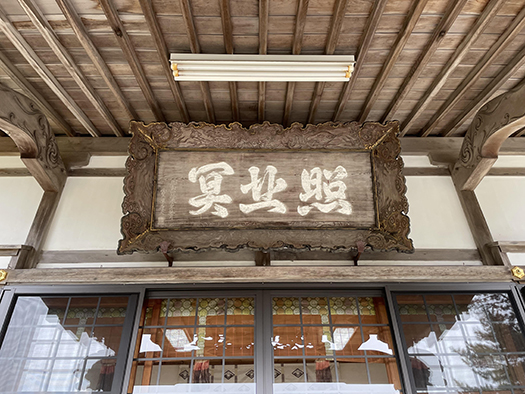


わたしはこれまで北海道の歴史については、基本的に明治以降の北海道開拓と日本社会からの殖民、そのための最大のテーマであった「日本住宅技術の寒冷対応」ということが基本認識でいた。
たぶんこのことは住宅に関連する人間であれば自然なことだろうと思います。
しかし住宅の基本的な目的には「人間の暮らしのイレモノ」という祖型がある以上、この地で連綿と続けられた人間のドラマにも深く興味を抱かせられる。以前から気になっていたとはいえ、北海道の中でもやや特異な歴史をたどってきた道南・函館地区について、その日本と蝦夷地の混淆したような雰囲気について、ひとつの手掛かりとして道南十二館探索はあるように思っています。
従来こういう北海道島先史については、いくつかの著書もある高校の後輩という瀬川拓郎さんを導きとして得てきていたのですが、今回違う経緯から「志苔館」現地を探訪し、そこでの函館市の調査記録など物証も確認できる資料類から道南十二館について強く惹かれてしまったのですね。
言うまでもなくこの道南十二館という和人の武装勢力とアイヌ社会とが先鋭に対立したのが「コシャマインの戦い」。この「志苔館」の城下町的な集落地域で営業していた和人の鍛冶屋が、注文主であるアイヌの少年と品質と値段について口論の末に刺殺してしまった(1456年)。少年はこの志苔館の近くのアイヌ人集落コタンの首長の子であったという。
この事件について、当然アイヌ人社会全体がその憤りを共有することになる。
まず、件の鍛冶屋村が襲われ女子供問わずに虐殺された。その後、政庁である志苔館までもが攻撃されている。同年の秋にはいったん停戦していたが、それはアイヌ社会側の「秋の狩猟期」停戦だったという。
翌年(1457年)長万部周辺のコタンの首長で東部アイヌの「大族長」であったコシャマインを総大将としたアイヌ同盟軍が蜂起、東部アイヌ4千余、北部アイヌ2千余、西部アイヌ3千余の合計1万の兵力で南下して志苔館に襲い掛かったとされている。
こういった事実から、1456-1457年当時のアイヌ人社会の状況の一端を推測することが可能。
アイヌ側から見れば、道南地域に次々と勢力を拡大する和人勢力は、交易においてその対手であることが非常に重要な要素。発展する中世日本社会からは実にさまざまな交易品がアイヌ社会にもたらされていたことだろう。白黒フィルム映像でアイヌの結婚式記録を観たことがあるが、そこでは花嫁花婿が「米の飯を腹一杯食べる」という儀式があった。コメは非農耕民であるかれらには富の象徴であることは自明。
アイヌの生活様式全般にわたって、日本社会との交易が「基盤」を構成していた状況があったに違いない。そういった対手と本格的に先端を開くには、非常な決断があったのだろうと思われる。
<以下、あしたへつづく>
English version⬇
The Japanese Armed Forces “Dounanjukan” and the Battle of Koshamain-1
The incident at the Shikokan castle townhouse in 1456, in which an altercation over a minor business transaction led to a stabbing to death, sparked the anger of the broader Ainu community. …
My basic understanding of Hokkaido’s history up to now has been the development of Hokkaido and its colonization by Japanese society after the Meiji period (1868-1912) and the “cold adaptation of Japanese housing technology,” which was the greatest theme for the development of Hokkaido.
Perhaps this is natural for anyone related to housing.
However, as long as the basic purpose of housing has the ancestral type of “iremono of human life,” I am deeply interested in the human drama that has been continued in this area. Although I have been curious about the Donan-Hakodate area, which has had a somewhat unique history even within Hokkaido, I believe that the exploration of the Donan Twelve Halls is one clue to the mixed atmosphere of Japan and the Ezo region.
I had been guided in my research on the prehistory of Hokkaido Island by Takuro Segawa, a high school junior who has written several books on the subject, but this time I visited the Shikokan site for a different reason, and was strongly drawn to the Twelve Municipal Buildings of Southern Hokkaido by the physical evidence from Hakodate’s research records and other materials that were available there.
Needless to say, the “Battle of Koshamain” was a sharp confrontation between the Japanese armed forces of the Twelve Dōnamikan and the Ainu community. A Japanese blacksmith operating in the castle-like settlement area of Shikokan stabbed an Ainu boy, the owner of the order, to death after an argument with him about quality and price (1456). The boy was the son of the chief of Kotan, an Ainu settlement near Shikokan.
Naturally, the entire Ainu community shared the outrage over this incident.
First, the blacksmith village in question was attacked and women and children alike were massacred. Later, even Shikokan, the government office, was attacked. In the fall of the same year, there was a truce, but it was an “autumn hunting season” truce on the part of the Ainu community.
The following year (1457), an allied Ainu army led by Koshama’in, the chief of the Kotan around Chōmangu and the “Great Chief” of the Eastern Ainu, rose up and attacked Shikokan with a total of 10,000 men, including more than 4,000 Eastern Ainu, 2,000 Northern Ainu, and 3,000 Western Ainu, moving southward.
From these facts, it is possible to infer a part of the situation of the Ainu community at the time of 1456-1457.
From the Ainu point of view, the Japanese power expanding its influence in the southern area of Hokkaido was a very important factor in trade with the Ainu. The developing medieval Japanese society must have brought a wide variety of trade goods to the Ainu society. I once saw a black-and-white film of an Ainu wedding ceremony in which the bride and groom ate a full meal of rice. It is obvious that rice is a symbol of wealth for the Ainu, who are non-agricultural people.
The Ainu’s entire way of life must have been based on trade with Japanese society. It must have been a very difficult decision for the Ainu to open up a full-fledged frontier with their counterparts in Japan.
<Continue to the next page.
Posted on 5月 6th, 2024 by 三木 奎吾
Filed under: 歴史探訪







コメントを投稿
「※誹謗中傷や、悪意のある書き込み、営利目的などのコメントを防ぐために、投稿された全てのコメントは一時的に保留されますのでご了承ください。」
You must be logged in to post a comment.